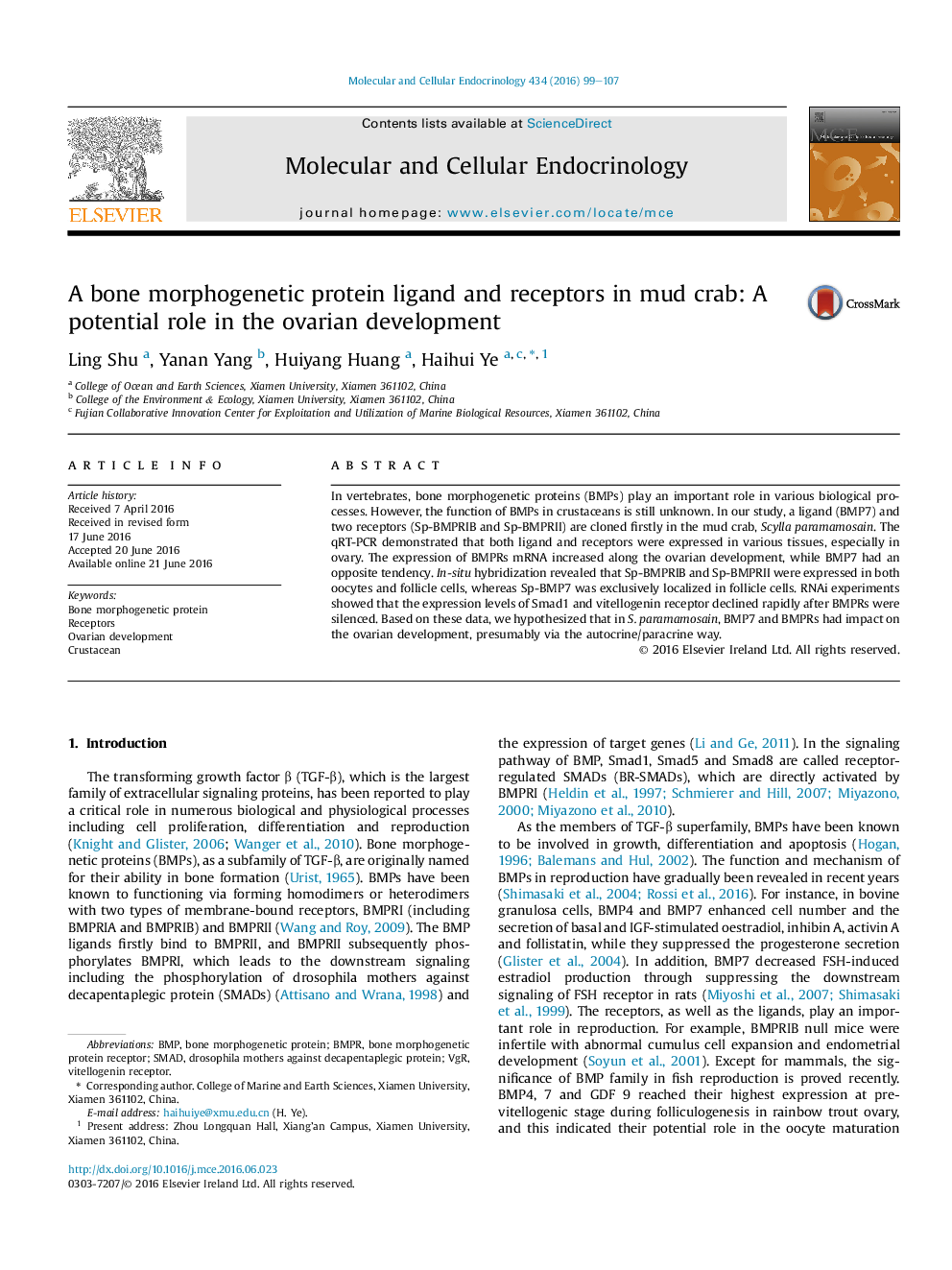| کد مقاله | کد نشریه | سال انتشار | مقاله انگلیسی | نسخه تمام متن |
|---|---|---|---|---|
| 2195500 | 1550845 | 2016 | 9 صفحه PDF | دانلود رایگان |
• It is first to clone and characterize the ligand and receptors of BMP family in crustaceans.
• These BMP members might be involved in the ovarian development, similar to the vertebrates.
• The ligand and receptors are located in different cells in ovary.
• In crustaceans, BMPs play crucial roles in the ovarian development, probably via an autocrine/paracrine way.
In vertebrates, bone morphogenetic proteins (BMPs) play an important role in various biological processes. However, the function of BMPs in crustaceans is still unknown. In our study, a ligand (BMP7) and two receptors (Sp-BMPRIB and Sp-BMPRII) are cloned firstly in the mud crab, Scylla paramamosain. The qRT-PCR demonstrated that both ligand and receptors were expressed in various tissues, especially in ovary. The expression of BMPRs mRNA increased along the ovarian development, while BMP7 had an opposite tendency. In-situ hybridization revealed that Sp-BMPRIB and Sp-BMPRII were expressed in both oocytes and follicle cells, whereas Sp-BMP7 was exclusively localized in follicle cells. RNAi experiments showed that the expression levels of Smad1 and vitellogenin receptor declined rapidly after BMPRs were silenced. Based on these data, we hypothesized that in S. paramamosain, BMP7 and BMPRs had impact on the ovarian development, presumably via the autocrine/paracrine way.
Journal: Molecular and Cellular Endocrinology - Volume 434, 15 October 2016, Pages 99–107
